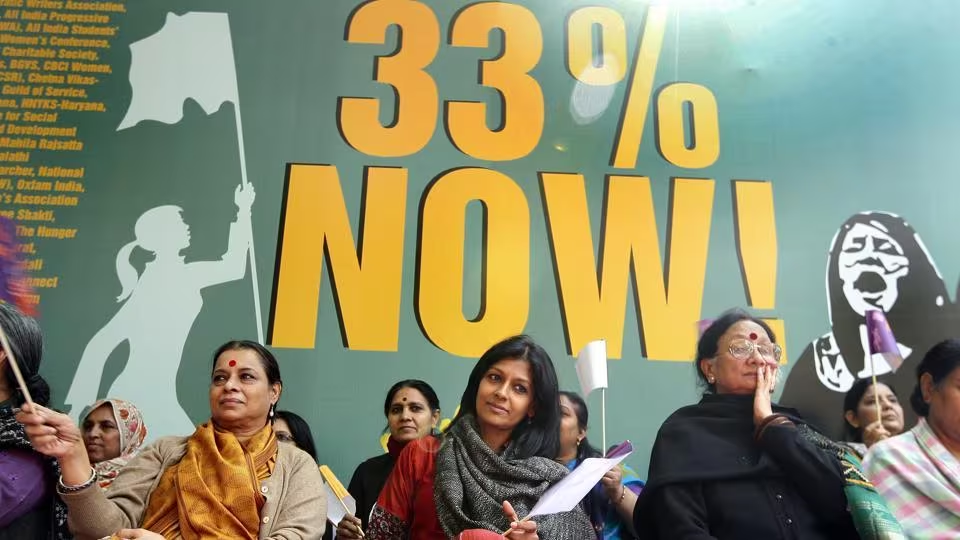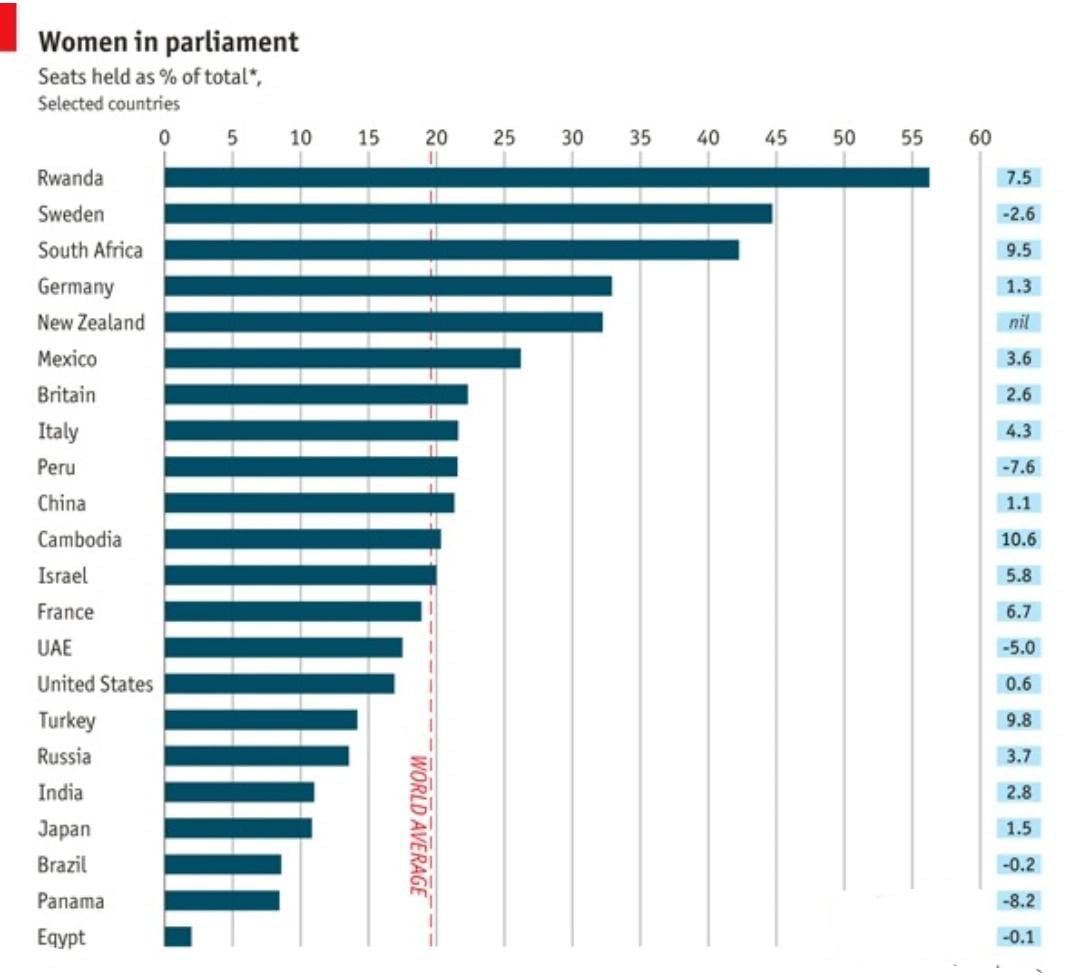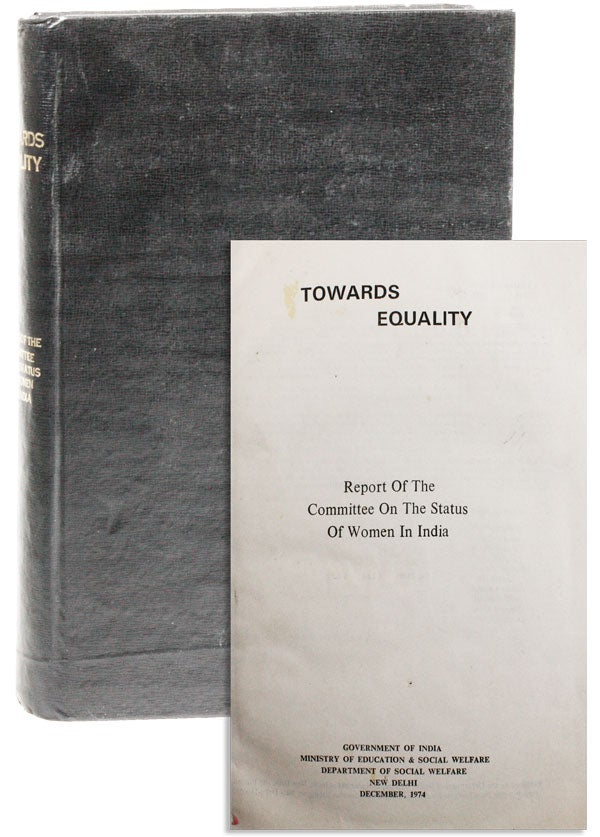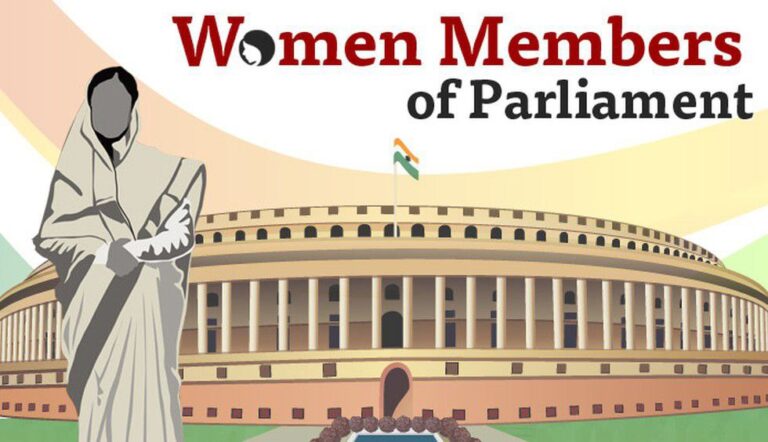Prime Minister Narendra Modi announced the women’s quota bill during the first day of the proceedings at the new Parliament building, to reserve one-third of the seats in the Lok Sabha and state assemblies for women. The Union Cabinet approved the constitution amendment bill to provide reservations for women in Parliament and state assemblies under the leadership of Prime Minister Narendra Modi. The approval of the women’s reservation bill paves a way for introducing the historic bill in the ongoing special session of Parliament. The women's reservation bill has support from various political parties in Lok Sabha and state assemblies, and hence it is likely to see a smooth passage this time, unlike in earlier instances when several regional parties opposed it.

Why do we need it?
Representation: Women make up a significant portion of the population, and it is essential that their perspectives, concerns, and needs are adequately represented in decision-making bodies like the Lok Sabha. Though women’s vote share has increased, the number of women in position of power has not increased. Any scheme of women’s reservation must be within the constitutional tenets and must also account for its representation across caste groups.
Role Models: Women's representation in political leadership can serve as a source of inspiration for future generations of women to pursue careers in politics and public service.
Figures like Sarojini Naidu, Indira Gandhi and Sushma Swaraj have demonstrated strong leadership and shattered glass ceilings, inspiring women worldwide to pursue careers in politics. Their achievements underscore the importance of diverse voices in shaping government and policy.
Gender Equality: Historically, women have been underrepresented in politics and have faced discrimination and bias. Women have suffered dur to systemic inequality and barriers. Reservation helps rectify this imbalance and contributes to gender equality in political participation.
Diverse Perspectives: Having a more diverse parliament, including women, can lead to more well-rounded policy discussions and decisions that take into account a broader range of perspectives and experiences.
They advocate for issues such as gender equality, healthcare, education, and social welfare with unique insights. Additionally, women of color, LGBTQ+ women, and those from various backgrounds contribute intersectional viewpoints, addressing complex societal challenges more comprehensively. Diverse representation in politics is essential for creating inclusive and equitable policies that benefit all citizens.
Social Change: Increased representation can lead to changes in societal attitudes towards women's roles in politics and public life, challenging stereotypes and fostering a more inclusive society. Women politicians have advocated for better access to healthcare, including reproductive rights, maternal care, and mental health services. Also women politicians have worked to implement policies supporting work-life balance, including parental leave and affordable childcare.
Comparison with other countries–

As the chart shows, Rwanda, Sweden and South Africa are leaders in terms of the percentage of women in parliament (well above the world average of about 20%). Brazil, Panama and Egypt have the lowest percentages of women in parliament on the chart, with Egypt having less than 2% women in its parliament.
With 6% of women in its parliament Georgia stands between Egypt and Panama. Compared to Georgia, Armenia and Azerbaijan have a higher share of women in their parliaments – 9% and 16%, respectively. However, all the three countries of the South Caucasus are well below many European countries—especially the Nordic countries which have the highest percentages of women in parliament (the average is 42%).
Whereas in India,
There is a huge difference in the ratio of population of women in India and their role in leadership. As per National family health survey, women outnumber men. If we see India as a whole there are 1023 women per 1000 men.
But if we see the representation of women in parliament;
In Lok Sabha there are 14.94% and in Rajya Sabha there are 14.05% women representatives.
At the state level also;
Gujarat- It elected just 8% of women legislators in its 182 members assembly.
Himachal Pradesh- where every second voter is a female, has elected 67 men and only 1 woman.
And the National average of women in all state assemblies remains around 8%.
Last year 17 countries had quotas for women out of 59 countries that held elections. There was about a 10% increase in the number of women in parliament for those countries with quotas compared to those without quotas.
HISTORICAL BACKGROUND
In 1971, United Nations requested to India to prepare a report on the status of women in the county. As 1975 was declared as “International women’s year”. The ministry of Education & Social Welfare appointed a committee under the Chairmanship of Veena Mazumdar called CSWI (committee on status of women in India) to inspect all aspects.
The report named “Towards Equality” concluded that Indian state had failed in its constitutional responsibility to ensure gender equality. After that the efforts toward the welfare of women had been started.

Rajiv Gandhi government
In 1987, Rajiv Gandhi government came into power. They made a 14 members committee under the presidency of Union Minister Margaret Alva. She made a National perspective plan for women – 1988-2000. There were 353 recommendations of the committee, in which one of the most important recommendations was – Reservation for women in elected bodies. But government falls after few steps and it did not turn out to as planned.
PV Narasimha Rao government
In 1991, PV Narasimha Rao government came into power. When they introduced the local bodies through 73rd and 74th Amendment, they considered the recommendation of Margaret Alva’s committee and implement it and also mandate it- Reservation of one-third seats for women in Panchayati Raj institutions and offices of chairperson at all levels of Panchayati Raj institutions and in urban local bodies respectively.
HD Deve Gowda Government
First women’s reservation Bill brought by Deve Gowda Government
In 1996, Prime minister HD Deve Gowda presented 81st Amendment Bill in which there was 1/3rd reservation for women in Parliament and State legislative.
MPs supported unanimously across the party lines but MPs especially from OBCs opposed it (because there is no reservation for OBCs in parliament or state assemblies)
So they appointed a Select committee to consider this issue under communist leader Geeta Mukherjee. The committee, with 21 members from Lok Sabha and 10 from Rajya Sabha, had stalwarts including Sharad Panwar, Nitish Kumar, Mamta Banerjee, Uma Bharti and, late Sushma Swaraj. The panel noted that the seats for women had been reserved within the SC/ST quotas, but there was no such benefits for OBCs women because there is no provision for OBC reservation.
Gujral government
In April 1997, Deve Gowda was forced to resign by Sitaram and Inder kumar Gujral became Prime Minister. On 16th may 1997, Bill was taken up again and OBC MPs led the opposition. Nitish kumar, who had formed the Samta Party along with George Fernandes, argued: “ Today out of 39 members only four belongs to OBCs…. The population of women is 50% and OBCs are 60%, but is anyone speaking for OBC women out of 50% women?” But the discussion could not proceed, and the House was adjourned sine die.
On November 1997, amid uproar over the report of the Justice MC jain commission that inquired into the assassination of Rajiv Gandhi, the Congress withdrew the support from the Gujral government. With the dissolution of Lok Sabha, the women’s reservation bill lapsed.
Atal Bihari Vajpayee
On 12th July, 1998, Atal Bihari Vajpayee government took over, MPs including Mamta Banerjee and BJP leader Sumitra Mahajan, disrupting proceedings in parliament. On July 20, Law minister M Thambi Durai rose to introduce the bill, RJD MP Surendra Prakash Yadav snatched it from his hand and along with the party colleague Ajit Kumar Mehta, picked up the more copies and tore them.
Parties like RJD and SP, and even OBC MPs from the BJP opposed the bill strongly. Iliyas Azmi of the BSP demanded representation for Muslim women as well. In April 1999, after Jayalalithaa withdrew support to Vajpayee’s government, a vote of confidence was taken in Parliament, which the government lost by a single vote. Lok Sabha was dissolved and the bill lapsed again.
In April 2000, the election commission asked political parties their opinion on reservation for women. On 7th March 2003, Prime Minister Vajpayee made another attempt to build a consensus at an all-party meeting. He was not successful, and the NDA lost power in the election of 2004.
Manmohan Singh government
On 22nd August 2005, Sonia Gandhi convened a meeting to find consensus on the women’s reservation bill, which was attended was UPA constituents and the left parties.
First, to introduced the lapsed bill providing 33% reservation of seats for women.
Second, to reserve one-third of seats for women, but to then increase the overall strength of the legislatures, so that the actual number of unreserved seats do not decrease.
Third, to implement the so-called “MS Gill formula”: the proposal of the election commission to make it mandatory for recognised political parties to filed a minimum agreed percentage of women in elections of state assemblies and Parliament.
On 6th may 2000, the UPA government introduced Constitutional (108th Amendment) bill, 2008 in Rajya Sabha. The Bill, which sought to reserve one-third of all seats of women in Lok Sabha and the state assemblies. However, due to differences within the UPA and even within the Union Cabinet, the bill was never brought to Lok Sabha and it lapsed with the dissolution of the Lower House.
PM Modi government
The BJP 2014 Sankalp Patra (manifesto) had said; “Women’s welfare and development will be accorded a high priority at all levels within the government. BJP is committed to 33% reservation in Parliament and State assemblies through a constitutional amendment”.
The 2019 Sankalp Patra repeated the same words, Women have emerged as a significant constituency for the BJP, and the party has benefitted from the goodwill generated by women-focused welfare schemes like Ujjwala Yojna. The Sangh Parivar has identified women as important section of the population.
Editor’s Note-
The world has recognised the women-led development process in the country and iswitnessing contribution made by Indian women in different aspects of life from sports to startups.
Once the bill comes into force, the number of women members in Lok Sabha will rise to 181 from the current tally of 82 women Lok Sabha members, which is a huge representation.
But at the same there are some challenges to implement such law in India like Sarpanch Pati issue, Some recent studies on panchayats have shown the positive effects of reservation on empowerment of women and on allocation of resources. But in reality they are just being representative or puppet and the actual decision making power are held in the hand of their husbands or elders. If these kind of issues will resolve and the law implement properly then it is going to change the picture of Indian politics completely and will strengthen democracy.

